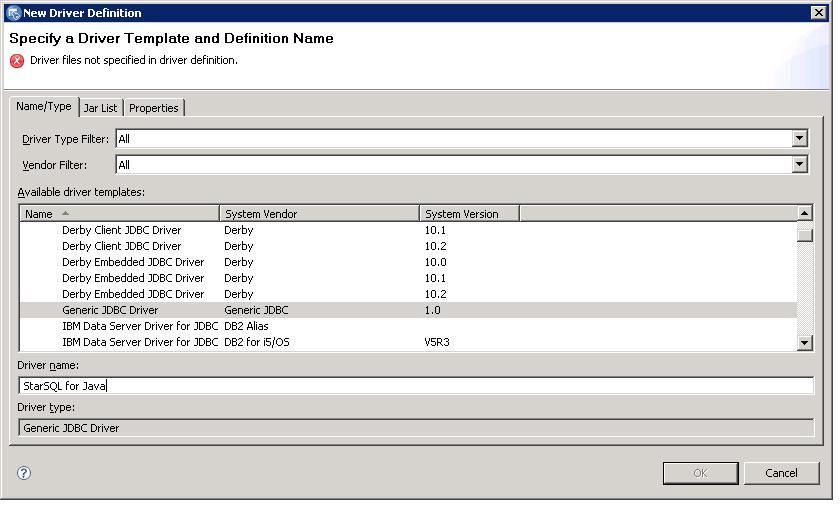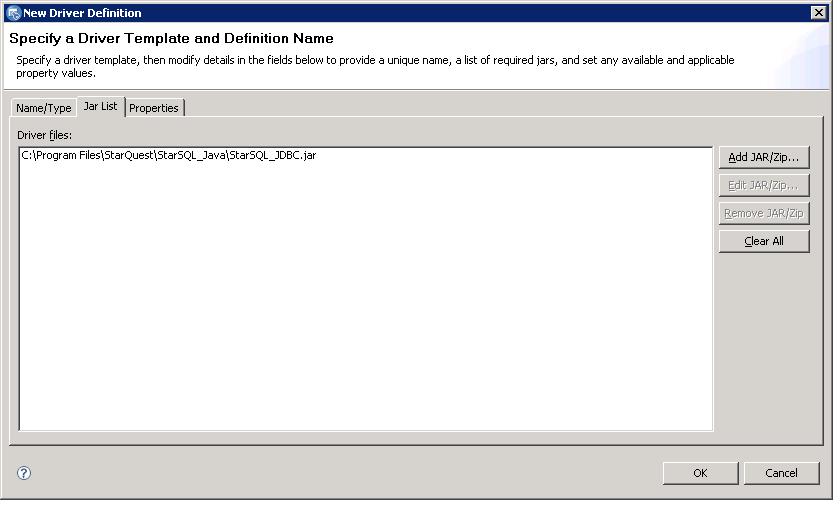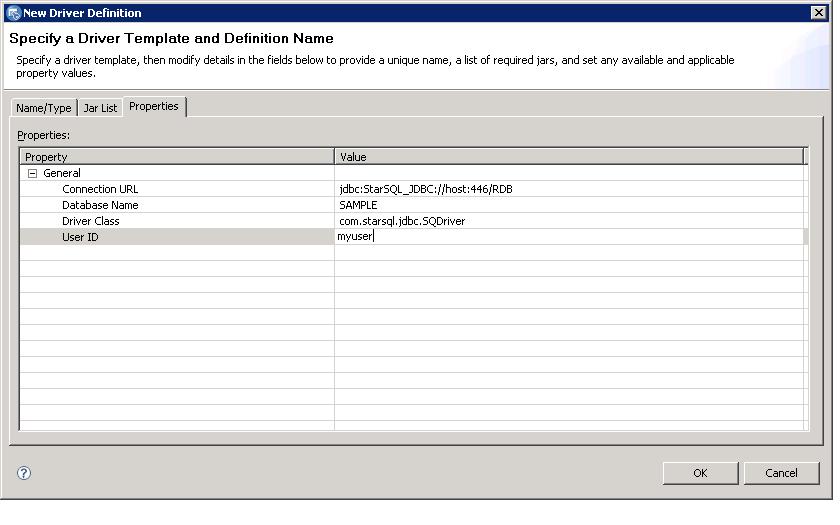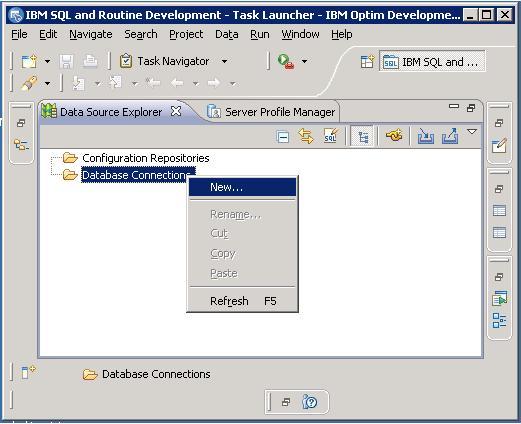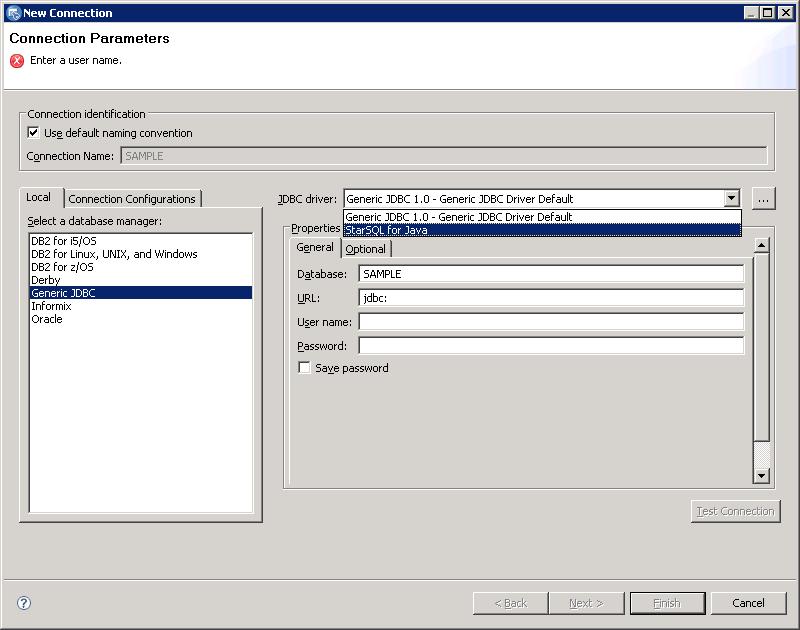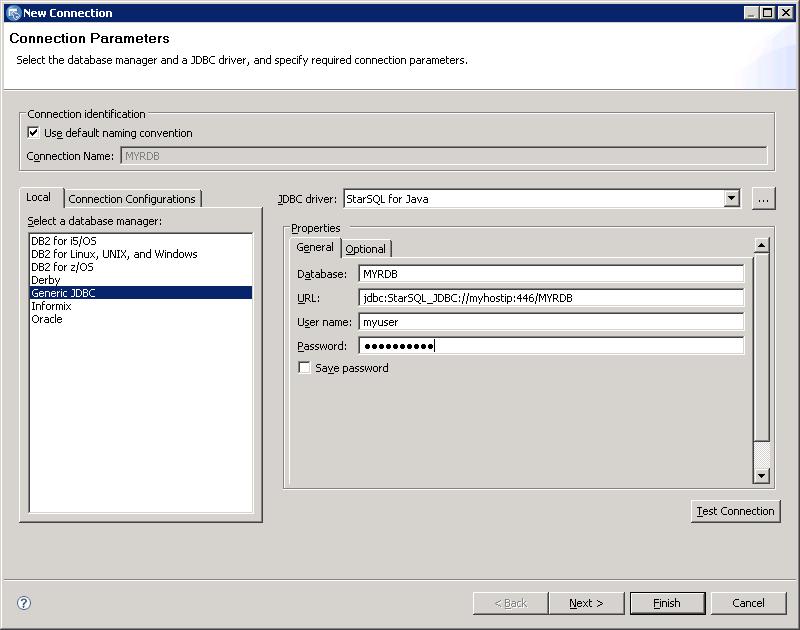StarQuest Technical Documents
Using StarSQL for Java with IBM Data Studio
Last Update: 14 August 2019
Product: StarSQL for Java
Version: 2.59 or later
Article ID: SQV00SJ008
Abstract
IBM Data Studio is an Eclipse-based application that provides developers and database administrators with basic capabilities for DB2 database management and development. StarSQL for Java can be used to provide database connectivity to DB2 systems when working in Data Studio. In addition, Data Studio can be used to develop Java applications that use StarSQL for Java.
This document describes how to configure IBM Data Studio connections that use StarSQL for Java.
Solution
- Launch IBM Data Studio.
- Select the Windows menu item and choose Preferences-->Data Management-->Connectivity-->Driver Definitions.
- Click on the Add... button.
- In the New Driver Definition dialog, select Generic JDBC Driver and change the Driver name to StarSQL for Java.
- On the Jar List panel, Select Add JAR/Zip, browse to the location of StarSQL for Java and select StarSQL_JDBC.jar.
- On the Properties panel, add a sample Connection URL (e.g. jdbc:StarSQL_JDBC://host:446/RDB), Driver class: com.starsql.jdbc.SQDriver, and, If desired, a sample Database name and typical UserID.
- Click OK. StarSQL for Java now appears in the list of Driver Definitions.
- Close the Preferences dialog.
- In Data Source Explorer, right click on Database Connections and select New...
- In the Connections Parameters dialog, select Generic JDBC under "Select a database manager:" and select StarSQL for Java from the drop-down menu for JDBC driver.
- Under properties, enter the appropriate values to connect to your DB2 system (host, port, database name, user password; additional properties may be entered on the Optional pane) and use the Test Connection button to verify connection. The "Database" field is informational and is used by the Data Studio application to identify the connection.
- Click Finish to save the connection.
The new connection will now appear under Database Connections and is ready to use.
The connection can now be used to browse and administer the database and perform development tasks such as exporting and running Java or SQL stored procedures.
Licensing
To license StarSQL for Java for use with Data Studio, do one of the following:
Copy or link StarLicense.properties to the Data Studio plugins subdirectory:
On Windows, in an elevated command window:
mklink "C:\Program Files\DBeaver\plugins\StarLicense.properties" "C:\Program Files\IBM\DS4.1.3\plugins"
On Linux
ln -s /usr/share/starsql_java/StarLicense.properties <DataStudioDir>/plugins
OR
Create a DNS entry starlic, pointing to a StarLicense server, either on your DNS server or in your local hosts file (\Windows\System32\drivers\etc\hosts or /etc/hosts).
Deployment to other machines
Once the driver and connections have been configured as described above, you can copy the configuration to other machines by copying the following files from the workspace of one machine to the other:
- driverStorage.xml - this is an XML file containing a list of drivers and their configuration
- ServerProfiles.dat - a binary file containing connections
These files are located in the workspace directory IBM\rationalsdp\workspace\.metadata\.plugins\org.eclipse.datatools.connectivity, typically located in C:\Users\<USERID> (Windows Vista & later) or C:\Documents and Settings\<USERID> (Windows XP/2003)
Note that the XML entry in driverStorage.xml contains a path to the StarSQL_JDBC.jar file, so StarSQL for Java should be installed in the same location on both machines.
This method of configuration is unsupported and may change in future versions of Data Studio; we recommend that you create backup copies of any files that you manually modify in this way.
DISCLAIMER
The information in technical documents comes without any warranty or applicability for a specific purpose. The author(s) or distributor(s) will not accept responsibility for any damage incurred directly or indirectly through use of the information contained in these documents. The instructions may need to be modified to be appropriate for the hardware and software that has been installed and configured within a particular organization. The information in technical documents should be considered only as an example and may include information from various sources, including IBM, Microsoft, and other organizations.


